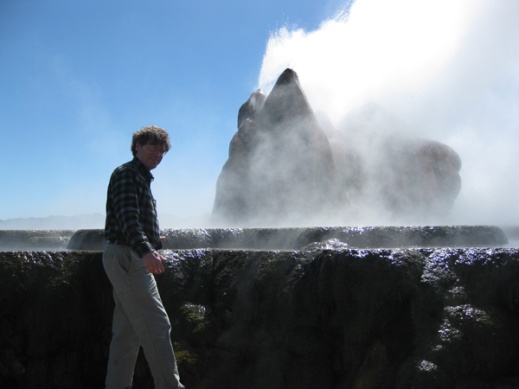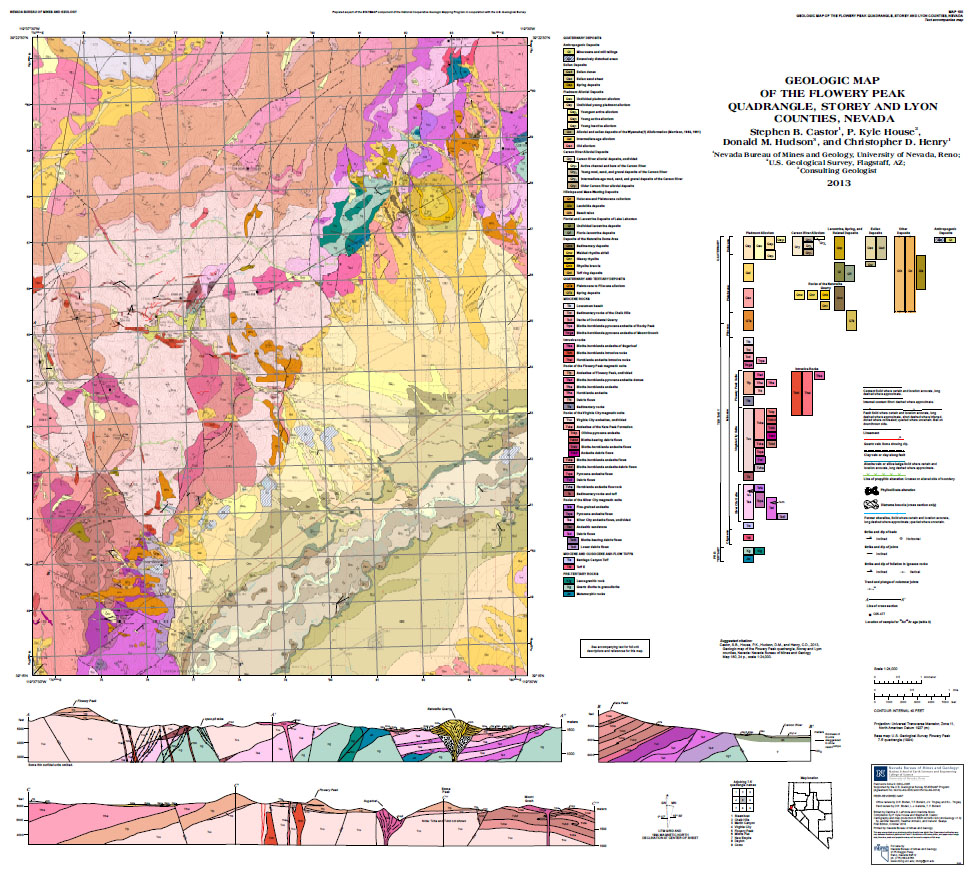- Nevada exploring geothermal’s potential for electricity, heating
- Cost, risk impede development
By Brenna Goth, July 15, 2019 06:01AM ET, Bloomberg Law.
Read the full story here: Earth’s Heat Gives States Another Option for Clean Energy Goals.
“Tapping heat beneath the Earth’s surface for electricity and other uses is gaining ground among policy makers, especially out West, as states seek to expand their options for meeting more aggressive renewable energy goals.
Geothermal energy’s promise lies in its ability to constantly produce power with limited environmental impacts, unlike resources such as wind or solar that are weather-dependent and have other challenges.
It also has the potential “to power the global electric grid many times over” with a nearly unlimited supply, Susan G. Hamm, director of the Energy Department’s geothermal technologies office, says in the introduction to its analysis on the subject.
While geothermal energy represents a small fraction of the power used in the U.S., production could increase by more than 26 times over roughly three decades with the right technology and policy changes, the analysis said. But the risk and cost of developing new projects could hamper the industry’s growth.
One major state player, Nevada, wants to tackle those issues as its utilities move toward getting half their electricity from renewable sources by 2030.
A new initiative in the state, which is second only to California in U.S. geothermal electricity generation, directs lawmakers to audit geothermal potential and propose changes that could boost the resource.
Environmental considerations for geothermal projects vary by technology and include water use, greenhouse gas emissions higher than for wind or solar, and seismic hazards. Utilities, though, face few choices for energy sources that both meet their climate change goals and can stabilize the grid, said Paul Thomsen, vice president of business development for the Americas at renewable energy company Ormat Technologies.
“This renewable resource really is a problem solver,” said Thomsen, who also chairs the Geothermal Resources Council policy committee.
Nevada Resort Shows Potential
Nevada is taking a broad approach to analyzing its geothermal potential and impediments. Policy proposals will go to the Legislature for approval.
Lawmakers and researchers will weigh how to map geothermal resources, and the necessary technology and financial support to use them. They will consider applications like using geothermal directly to heat public buildings, and figure out how to integrate the power source with the solar, mining, and lithium industries.
Increasing geothermal use is a matter of national security for state Sen. Pat Spearman (D), who sponsored the initiative. Breaking reliance on foreign oil became a priority following her military career, she said.
“I need the experts working on this with me,” Spearman said.
Some state leaders see potential in a Reno resort’s use of geothermal for heating, which can use underground water at lower temperatures than are needed to produce electricity. The 1,621-room Peppermill Resort Spa Casino produces all of its own heat from its onsite geothermal plant.
Geothermal use at the property dates back to the 1970s. A 4,400-foot-deep production well drilled more than a decade ago replaced boilers and now saves the property $2.2 million per year on its natural gas bills, according to Peppermill representatives. Its carbon dioxide emissions also decreased by 12,000 metric tons per year.
“We were on a known aquifer. So we knew the water was down there and we were able to utilize it,” said John Kassai, the resort’s central plant and geothermal engineering manager.
Risk Reduction, Faster Permitting on Table
Market demand for geothermal is increasing with higher state renewable energy requirements, particularly in places awash with solar, said Thomsen, from the Geothermal Resources Council. The Department of Energy is among agencies looking at how to make development cheaper and faster.
Exploring and developing resources deep underground poses unique challenges. Permitting and land access issues can also increase cost and project length.
The geothermal industry doesn’t have the research and development budget to address those issues, Thomsen said. Legislation proposed in Congress seeks to help, as does federally-funded research.
A project out of Nevada aims to reduce the risk of geothermal exploration to make the energy more economical, said James Faulds, director of the Nevada Bureau of Mines and Geology at the University of Nevada, Reno, that is leading the Energy Department-funded research.
Most geothermal resources are “blind”—they don’t have hot springs or other signs at the surface, said Faulds, who is also a professor at the University of Nevada, Reno.
The research looks at multiple characteristics of known geothermal systems, including fault locations, to find patterns that can indicate potential new resources. The goal is to make it quicker and cheaper to find and drill undiscovered systems; Industry would be responsible for actually developing the resource. Recent exploratory drilling at two areas the research identified found new geothermal systems. That result is an “enormous success” and shows promise for reducing risk, according to a statement from the Energy Department’s Geothermal Technologies Office.
To contact the reporter on this story:
Brenna Goth in Phoenix at bgoth@bloomberglaw.com
To contact the editors responsible for this story:
Gregory Henderson at ghenderson@bloombergenvironment.com;
Susan Bruninga at sbruninga@bloombergenvironment.com;
Anna Yukhananov at ayukhananov@bloombergenvironment.com







